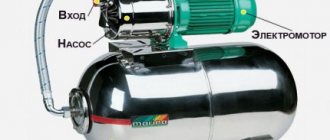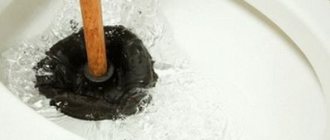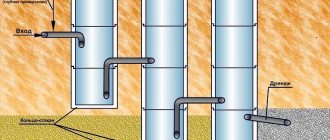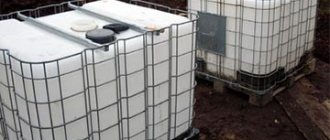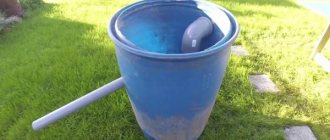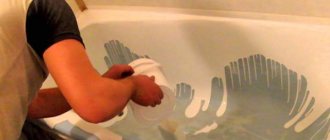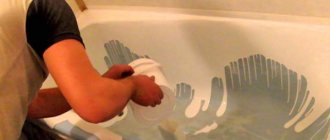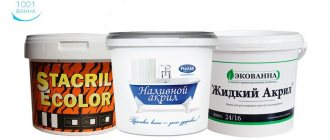Standards in construction and renovation
Author: jk.335500Jul 31, 2019Jul 31, 2019
The volume of the bathtub is a parameter that is important not only when planning a bathroom . Water consumption rates and subsequent material costs directly depend on it.
The volume of a bathtub does not always depend on its length.
- 1 In what cases is it useful to know the volume of the bath
- 2 Volume of standard Soviet models
- 3 How to calculate the volume of a bathroom
- 4 How to calculate the volume of a bathtub of a non-standard shape
- 5 How many liters are in a children's bath
- 6 How much water does it usually take to take a shower and bath?
- 7 How to reduce water consumption
How many liters are in the bath?
Now we know that daily water costs are quite high and we are trying to save. To this end, many people wonder how many liters are in bathtubs made of different materials - cast iron, acrylic, steel?
Naturally, the material from which the bathtub is made does not affect its volume. The main thing here is to understand whether you are bathing in a bath or just relaxing in warm water.
The table shows the sizes of different baths and the volume of water in liters.
| Baths, model | Dimensions, cm | Volume, l |
| "Neptune" | 175x70 | 169 |
| "Siberia" | 170x175 | 245 |
| "Languor" | 150x70 | 153 |
| “Nakhodka” | 170x75 | 210 |
How to reduce water consumption?
If you are under 180 cm tall, you can save 20 liters of water daily simply by choosing a bowl that is 10 cm shorter (170 cm). A 150 cm long sitz bath will not help you save money, because its volume is 290 liters.
A lot depends on the design of the shower head. Sometimes it is enough to change the nozzle and you will get a better distribution of water flows throughout your body. You will get no less pleasure, and the bills will be more pleasant for your wallet.
Standard bath
Question: how much water does a regular bath hold? Due to the different sizes of bathtubs, it is difficult to say for sure. How many baths - so many options. A standard bathtub holds approximately 200 liters. But the hydromassage baths can accommodate several people. Bathtubs of this type can hold from 600 to 900 liters! Without performing complex mathematical calculations, a noticeable difference is visible.
For those who are especially persistent and curious, data on the capacity of standard-sized hot tubs:
- a bathtub 150x75 cm holds 160 - 180 liters;
- bath 170x70 cm approximately 190 - 220 l.
Dimensions of a standard bath
It is clear that two parameters are not enough to accurately know the volume of the bath. Height must be included in the calculations. But, as a rule, not all manufacturers are in a hurry to publish sizes.
Of course, you can see the necessary numbers, if you look hard enough, from all manufacturers. This is not a task within the scope of this article. The main thing to remember is that consumption does not depend on the volume of the bath, but on how water procedures are taken. Statistics show that the average person spends 250 liters. Sometimes it exceeds 700 liters.
Volume of standard Soviet models
In the USSR, based on the developed GOST standards, 4 main types of cast iron bathtubs were produced. Their main difference was in length, the width varied between 70 cm, and the depth from the edge to the bottom of the bath was usually 40 cm.
The bathtubs, in which one could wash only while sitting, had dimensions of 140 x 70 cm and 150 x 70 cm. Their volume was about 180 and 200 liters, respectively.
Bathtubs capable of accommodating a lying person were produced in sizes 160 x 70 cm and 170 x 70 cm. Their volume was 220 and 240 liters.
How many liters does it take to take a bath?
We talked about a regular bath. The person just lies there for a few minutes and relaxes. Then I washed off everything unnecessary, rinsed in the shower and that’s it. In this case, the volume of water will be within 200 liters.
What if you take a bath for relaxation? With rich foam, with various salts, oils and flavors? The beneficial effects are believed to be as follows:
- a bath with soda protects the skin from dryness;
- with table salt – has a general strengthening effect on the body;
- with sea salt – helps reduce fatigue and joint pain, improve the overall condition of the skin;
- with pine needle extract – eliminates allergic redness and has a calming effect on the nervous system;
- with sedge - for those who have urolithiasis problems;
- with honey helps to relax and improve sleep;
- with a mixture of powdered milk – makes the skin elastic;
- with a glass of fruit vinegar - eliminates flaking of the skin.
Here you cannot do without the gradual adoption of water procedures.
- 150 – 200 liters for relaxation;
- 100 - 200 liters to wash away dirt;
- 40 – 50 finally rinse in the shower.
Thus, fluid consumption increases significantly.
How to determine the volume of a standard and non-standard bath
For one bath in a full bath, a person spends on average 200 liters of water. If we are talking only about hygiene procedures, then this is a very irrational use of resources.
After 5 minutes of being in the water, a person still showers his body. If the bath is filled for relaxing procedures using foam, oils, salts, infusions, then the costs are completely justified. It's the perfect end to a hard week at work. Knowing the volume of the bathtub, it is easy to calculate water costs per month.
The volume of a standard bathtub refers to containers of conventional rectangular models. Knowing their length and width, you can determine the filling capacity. If information from the manufacturer is not provided, you can use approximate data. A 150 cm bathtub is usually 75 cm wide and has a capacity of 160 l. If its length is 170 cm, width 75 cm, then the volume is 250 liters.
Non-standard bathtubs include sit-down, corner models of symmetrical and asymmetrical shapes. It is impossible to judge their capacity only by length and width parameters. You can't do without height data.
Unfortunately, not all manufacturers indicate them. Usually it is 50–60 cm. It must be measured without taking into account the legs and bottom width.
Important! Filling capacity depends on the material of manufacture. The walls of the cast iron model are thicker than those of acrylic
You need to measure the inner bowl of the bathtub.
Baby bath
If we talk about the volume of a children's bathroom, they are also of different sizes. Bathtubs are different, as are manufacturers.
| Baths, model | Dimensions, cm | Volume, l |
| Prima Baby Dolphin | 84x49x30 | 25 |
| Neonato Surf | 96x54x19 | 25 |
| Hoppop Bato+ | 40x75x28 | 25 |
| Combi 19975 | 52.6x80x26 | 35 |
But, the child is bathed in the bathtub in several stages. Various additives, such as chamomile, can also be used here. This means that the volume of water consumed also increases. But of course, adults spend much more water on themselves. If you compare all the examples given, you can understand that the main water consumption depends on the person himself.
Advantageous bath volume of 170 cm in liters: how to calculate
In most modern apartments you can find a 170 cm long bathtub installed.
Most often, when making a bathtub of the specified size, manufacturers choose materials such as:
- Cast iron;
- Steel;
- Acrylic.
Light in weight, affordable in price and easy to install, the 170 cm long steel bathtub has a width ranging from 65 to 75 cm and a volume of about 170 liters. But the water in a metal bath fills with noise and cools down quite quickly.
An acrylic bathtub with a width of 170 cm has a slightly different volume in liters
Cast iron bathtubs, 170 cm long with an approximate volume of 200-240 liters, have a number of pleasant characteristics, such as durability and long service life, they do not make much noise when drawing water and retain temperature for a long time, having warmed up well. Cast iron bathtubs are still considered traditional. If damaged, such a bathtub can be rehabilitated by calling an enameler, or you can paint it with enamel yourself. However, when installing a cast iron bathtub, you will have to tinker with it due to the weight and bulkiness of the product.
An acrylic bathtub will delight its owners with its light weight, ease of transportation and installation. Maintains water temperature for a long time. If damage occurs, and this type is susceptible to it, it is quite easy to fix. The volume of such a bath can range from 160 to 190 liters, depending on the width.
Calculations for bath volume
The most inquisitive ones can try to determine the volume by simply pouring buckets of water into the bathtub. This may be an interesting and exciting process for an inquisitive mind and to find out how much water the container will hold, but it takes a lot of time and effort, it is so labor-intensive. The method is also suitable for those who already have a bathtub at home.
What if you choose new plumbing? This method is clearly unacceptable. The volume of the bath can be calculated if you know the parameters of the product. This way you can find out how many liters the bathtub you like holds.
Summary
As you can see, determining the volume in liters for a bathtub is not difficult, especially if you have the time and opportunity to fill it with a bucket. The volume can also be calculated from the water meter. It is enough to shut off all possible devices that can use water. Wait until the counter stops and make sure it stays in one place.
We invite you to familiarize yourself with Acrylic bath liner: install it yourself
The meter readings are recorded, after which you can fill the bath to the brim, turn off the water and take the readings again. The difference between the first and second numbers will be the volume of the bath. If you want to struggle with calculations for complex shapes of bathtubs, you need to divide them into several simple geometric shapes, find the volume of each and add them together. The volume in liters can be calculated by scooping water from the bath with a container of known volume.
Approximate calculation
Let's calculate the volume of the container with these parameters (in centimeters):
- length 155;
- width 70;
- height 55.
Knowing that a liter is one cubic decimeter (1 l = 10x10x10 cm), we convert the dimensions into decimeters. Then we multiply these same parameters (in decimeters).
15.5x7x5.5 = 596.75
We round the resulting value and get a volume of 597 cubic decimeters or liters.
Using this example, you can also make calculations for other types of bathtubs. But when making calculations, we must remember that the height of the bathtub is taken without taking into account the height of the legs or frame under the bathtub. By purchasing a new bathtub and knowing its output data (you can measure it yourself), the volume of the product can be calculated easily.
Volume and features of products made from different materials ↑
A reliable and durable font can be made from various raw materials. The most practical and popular solutions are bathtubs made from the following materials:
Exclusive and expensive products can be made from marble, graphite or faience. Let's take a closer look at the features and capacity of each type.
Light steel bath ↑
Affordable price, light weight and ease of installation - these are the three main reasons for purchasing a practical steel model. They may well outweigh the disadvantages of a plumbing product made from this material: noise during water collection and its rapid cooling.
The volume of the bath in liters depends on the parameters of the purchased model: width, length and depth. The overall dimensions of the product are determined by approved state standards.
The standard length is 170 cm, but on sale you can find products 150, 160 and even 120 cm. The volume of a small bathtub 150 * 65 m is 140 liters. The volume of a 170 cm bathtub in liters varies depending on the width of the model, which can be from 65 to 75 cm.
Dimensions and displacement of a steel bath
Long-lasting cast iron bathtub ↑
The advantages of a cast iron bath include:
- long service life;
- excellent wear resistance;
- rapid heating and the ability to retain heat for a long period of time.
A significant drawback is the massiveness and considerable weight of the cast iron bathtub. Products made of cast iron cannot boast of variability in shape and variety of models. As a rule, models with a classic bowl are found on sale, because during the production process it is quite problematic to form non-standard contours of the vessel.
How many liters are in a cast iron bathtub? The capacity of a cast iron model depends on its dimensions. The volume of the bathtub is 170 cm with a width of 70 cm leaving from 210 to 245 liters. The most economical seated models are 10 cm long and deliver about 120 liters.
Classic cast iron bath
The capacity indicators and overall dimensions of the model are indicated by the manufacturer in the model passport, which is attached to each product.
Modern acrylic models ↑
Acrylic bowls quickly gained the loyalty and favor of customers. Because lightweight acrylic structures can be easily transported, installed and operated. Perhaps the only drawback of models made of composite material is their susceptibility to mechanical damage. However, you can easily get rid of scratches and deformations at home without the involvement of specialists.
How many liters of water does this bath hold? It is difficult to give a definite answer regarding acrylic models. Composite material allows you to give the bowl of the product almost any shape, which makes mathematical calculations difficult and complicated. The capacity of a miniature bowl can be only 70 liters, and the volume of a spacious bath for two can reach 1100 liters.
Volume of bathtubs of non-standard shape
Now you understand the algorithm for calculating the volume of containers of any size, but rectangular. What if the bathtub is oval or round? Knowledge of the basics of mathematics also comes to the rescue here. But does this use the value ? = 3.14.
So if one side of the bowl is 55 centimeters long and the other 65 centimeters with a height of 44 cm, the area will be equal to 3.14 x 55 x 65 = 11,225 cm?.
The resulting value for the area of the bathroom must be multiplied by its depth 11,225 x 44 = 493,922 cm?. We get 493,922 cm?. This means our bathtub has a volume of 494 liters. A bathtub of this configuration can hold so much water to the brim. Everything is simple and you don’t have to run around with buckets to find out the volume.
Remember or write down these formulas, and choosing a bath of any size will be much easier. Conscientious manufacturers describe all the necessary information in the product passport. And it is right. Without knowing the overall dimensions of bathtubs, it is difficult to choose a product for your room.
When purchasing products for a bathroom or toilet, do not hesitate to find out detailed information from sales consultants. It is for these purposes that they work with you. Knowing the volume of the bathtub in advance, you can prevent unnecessary expenses on paying for water consumption and save on your budget.
Cast iron baths
Cast iron bathtubs are a traditional plumbing model and continue to be very popular.
This is due to their qualities.
- Cast iron is a durable material; a bathtub can last a very long time.
- Cast iron is able to warm up, that is, the water in the bathroom maintains a pleasant temperature for a long time.
- There is no unpleasant noise when filling cast iron bathtubs with water.
The disadvantage of this type of bathtub is their heavy weight, which creates certain difficulties during transportation (especially if the apartment is located on one of the upper floors) and installation.
As a rule, bathtubs made of cast iron are produced in the form of a font, since it is quite problematic to give models from this material a complex silhouette. The answer to the question of how many liters are in a cast iron bathtub depends on the size of the model.
Standard models are available in length (in millimeters):
- 1500;
- 1700;
- 1800;
The width of the models can be:
- 650;
- 700;
- 750.
However, some manufacturers also offer models of non-standard sizes, from the smallest 1200 mm long to spacious (1900-2000 mm).
So, how many liters are in a standard bathtub? The smallest standard size model (1500x650) holds 140 liters of water. In large models - 170-195 liters.
However, there are models of bathtubs with increased capacity, which include 200 or even 250 liters of water. You can find out exactly what the capacity of the bathtub model you like is by reading its technical characteristics located in the product passport.
How we waste water
We wash our faces and brush our teeth with water (and the water also runs while brushing our teeth - we don’t turn off the tap). We spend it every day on cooking. We wash ourselves in the shower. A lot of water is spent on water procedures in the bathroom, relaxing for a long time in a lying position.
And if we take into account such an “achievement” of our utility workers as a long wait for cold water to drain and hot water to flow from the tap. But the water keeps flowing and how much there will be in the bathroom can only be guessed.
Of course, everyone knows that we use water every day. We don't think about saving. Let's look at the table, an approximate table of water consumption.
| Consumption category | Water consumption in liters |
| Washing, brushing teeth | 30 |
| Regular bathing | 135 |
| Preparation and consumption of food | 30 |
| Flushing the toilet | 60 |
| The process of washing clothes | 30 |
| Losses due to plumbing faults | 15 |
| Taking a shower | 70-100 |
The table clearly shows that the daily consumption is large. The bath takes up most of it. This is the cost per person. The question about the capacity of the bathroom is far from idle curiosity.
After reading this article, you are armed with the knowledge about choosing the right bathtub of the right size. And, knowing the required volume, you have the opportunity to significantly replenish your budget if you use water correctly. And do not forget to eliminate dripping water from a closed tap. Along with the water, your money, which you were able to save on buying a bathtub, goes into the sewer system!
The amount of water consumed per day in the bathroom
Civilization has spoiled man greatly. Now you don’t need to drag your feet and carry water from afar in buckets from the river home. Now it is enough to open the tap and you will be provided with the required amount of water. Having running water adds convenience to life, but it also allows people to waste water mindlessly. Often water goes down the drain uncontrollably because the taps in the apartment are leaking or the owners are simply too lazy to turn off the tap.
This usually leads to excessive water consumption.
The cost structure of 300 liters per person is as follows:
- 30 l – water consumption when washing and brushing teeth;
- 135 l – taking a bath (when calculating, the minimum volume of the bath is taken),
- 30 l – for food and its preparation;
- 60 l – for flushing the toilet;
- 30 l – for washing clothes;
- 15 l - losses due to faulty plumbing.
As you can see, a significant part of the water consumed, and therefore the payment for hot water, is due to taking a bath. Especially considering that hot water does not start flowing immediately, but gradually increases the temperature. Much less liquid is spent on other needs. How many cubes are included in the bath?
If the taps are leaking, there is nothing left to do but disassemble the faucet.
Of course, there is an opportunity to reduce utility bills by not using a bath at all, taking only a shower. Since water consumption for a shower is almost three times less than for taking a bath, this type of cost will decrease. However, this option does not appeal to many. Still, taking a bath is a very pleasant experience. For those who love showers more, you need to think about how to choose a shower stall.
The average person spends 300 liters of water per day. However, for some, 120 liters is enough, and for some, even seven hundred is not enough. How does this happen?
